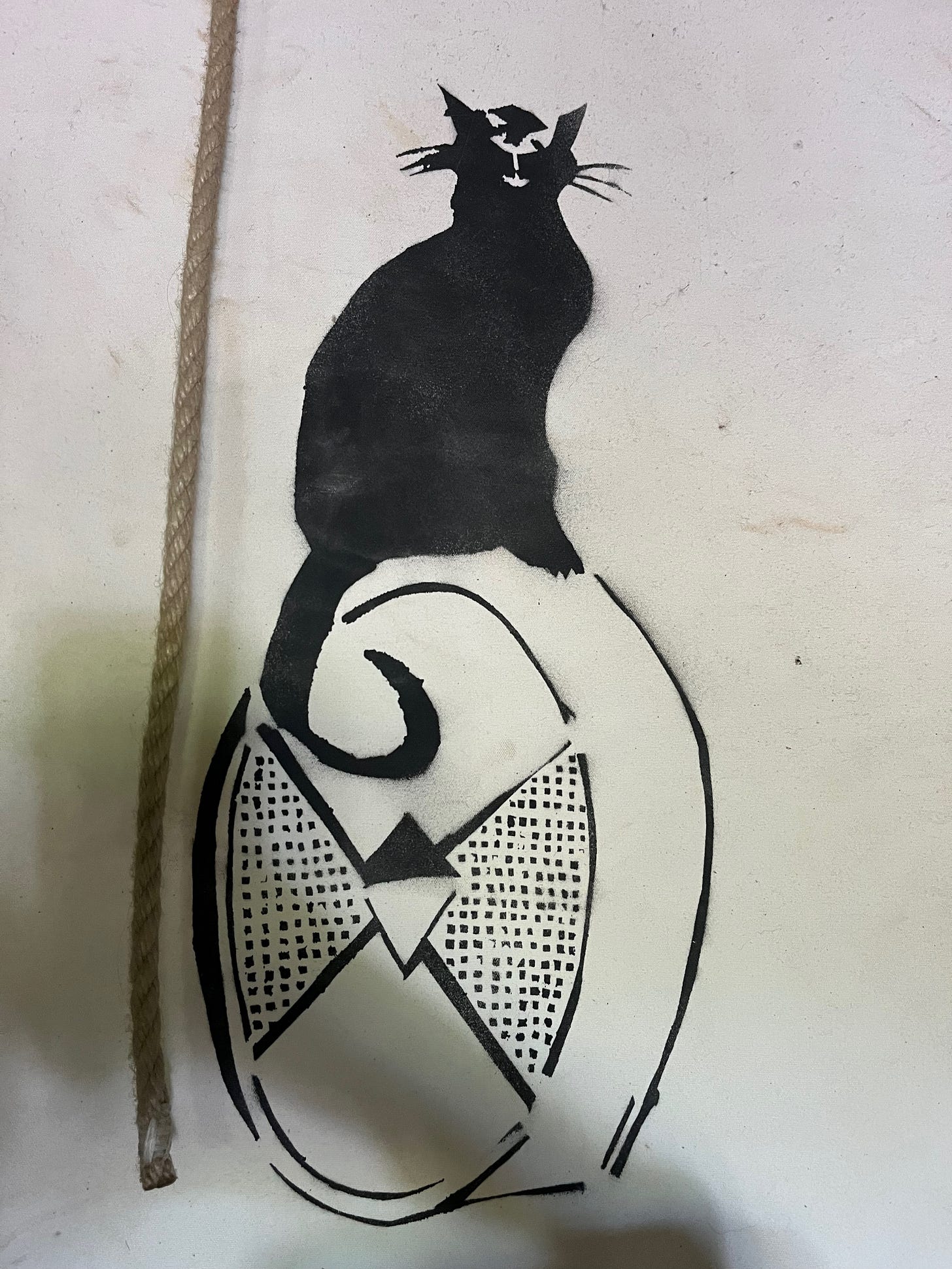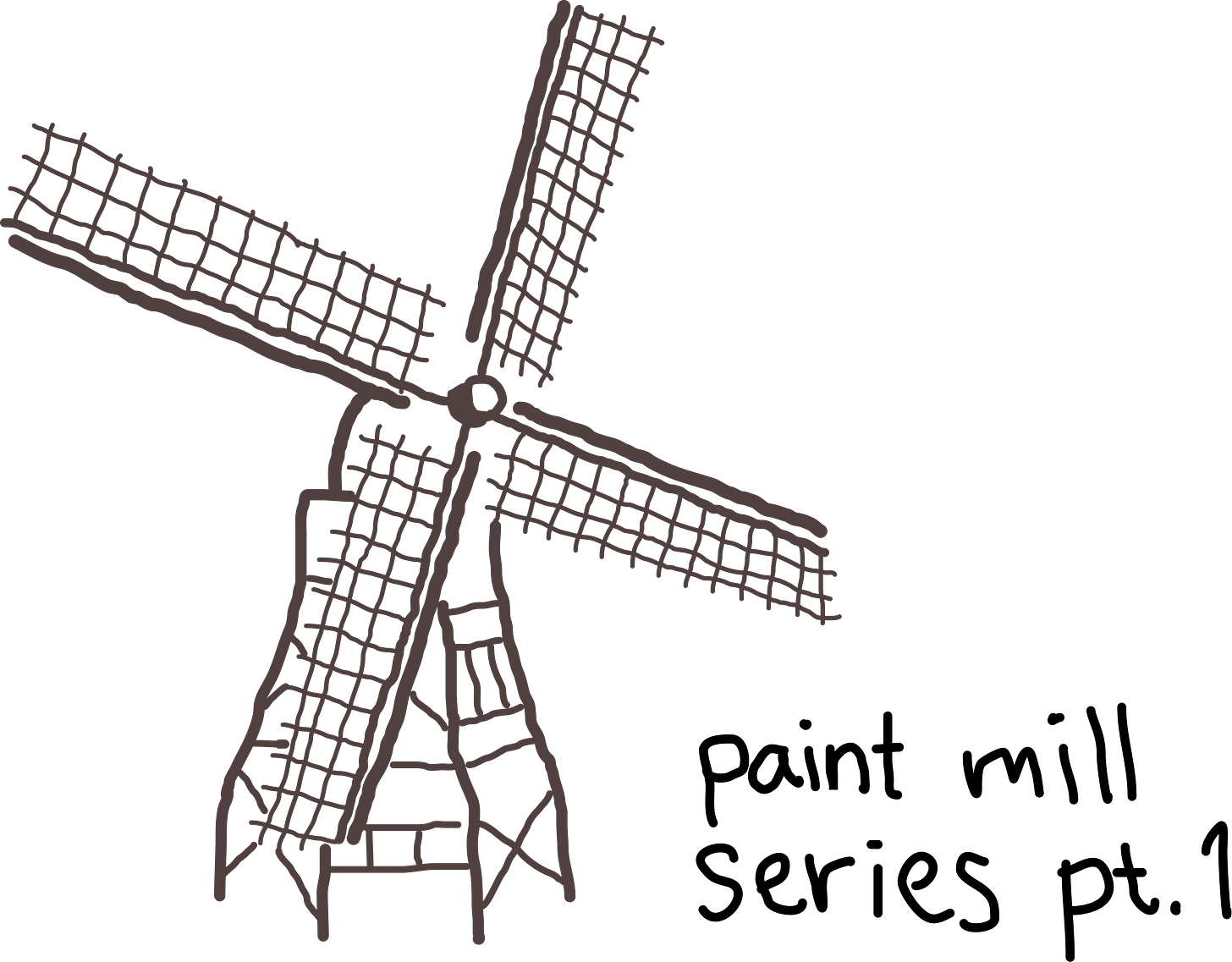Can Windmills Save the World?
Existential Reflections From My Trip to Amsterdam On Painting a Greener Future
Confession: I have an environmental guilty pleasure.
Even as an author of a book on zero waste and a self-proclaimed environmentalist of several years, there is a planet plundering activity I am not willing to give up: travel.
Despite the ecological repercussions of aviation emissions and single-use waste, I find myself unable to renounce the thrill that exploring new places brings. The cultural appreciation, new adventures, educational and creative high I experience abroad is unmatched. Recently, my wanderlust led me to Amsterdam, a city celebrated for its sustainable initiatives and alternative tendencies—a fitting compromise, or so I rationalized.
Amsterdam is ranked among the top 10 most sustainable cities in the world. A global biking capital; haven for plant-based food; leader in the circular economy; and most importantly a cultural icon for liberation, youth, and rebellion. Of all the places I could have gone, the Netherlands is certainly not the worst by example. In fact, my experiences there piqued my earthly curiosity so much so that it may have offset the scope 3 emissions of my travels according to the latest carbon accounting framework (settle down, carbon junkies).
From the Windmills to the Walls
On my last day in the Netherlands, a travel buddy and dear friend of mine joined me on an hour-long bus ride to a small district outside the city called Zaanse Schans, which we spontaneously discovered via a kiosk in the main transportation center, Centraal Station.
Zaanse Schans is a historic district brimming with windmills and a tangible sense of yesteryears. Walking through the gravel “streets” felt like a traipse through time, to simpler days when all that mattered were roofs, shoes, blood, and water. The sweet and salty smell of freshly-baked pastries and pickled herring tickled the breeze, and sheep and cattle grazed and sunbathed on the nearby prairie.
Amidst the reverie of this picturesque landscape, the town hosts 13 preserved mills, sampling some of the products once made and conveyed on the adjacent De Zaan river, including flour, mustard, lumber, oil, and pigments. Around 1850, 1000 of these family-owned and operated mills throughout the area were swiftly replaced by steam engines. One of the last few standing is a colorful mill called De Kat.
De Kat, a pigment mill processing dyewoods and earth pigments, is the last remaining paint mill in the world.
Rembrandt van Rijn, the world famous Dutch Golden Age painter responsible for works such as The Night Watch and The Storm on the Sea of Galilee, also sourced his pigments from this mill, and his painting oil from the mill next door.
Knowing De Kat is a one-of-a-kind establishment that once generated pigments for the great Rembrandt van Rijn is not why I found the place so captivating. Instead, it was the intriguingly simple yet disciplined lifestyle of the milling families tethered to the ebbs and flows of wind energy.
Everyday before supper, my tour guide recounted, the mill man on duty would hitch up the blades of their mill to stop production overnight.
Fact: Wind is a free and renewable form of energy (at least in this context).
Yet these milling families still set clear boundaries for their working hours, albeit somewhat forced by other limits to production (e.g., daylight).
Contemplating the implications of a return to such windmill-driven craftsmanship in today's world, I found myself romanticizing the notion of a more sustainable existence.
If we were to return to 17th century-style windmill manufacturing would we be living in a more sustainable world?
Contrary to my intuition, the complexities that underlie this seemingly simple idea are multifaceted and require a closer examination.
Fifty Shades of Sustainability
Drawing inspiration from De Kat and Rembrandt, I embarked on a nuanced analysis of the evolution of paint production over the centuries, uncovering a myriad of factors, including:
The sources of pigments, from mud to mummies
The difference in lightfastness and photodegradability between oil and acrylic paints
The evolution of factory labor standards from the Dutch Golden Age to the COVID-19 pandemic
The mechanics of windmills and Rembrandt’s artistic techniques compared to modern paint manufacturing
In the upcoming series, I will delve into the comparison of paint production, focusing on:
The Product (i.e., paint)
The Process (i.e., everything but the paint)
The next two articles will guide you through the strokes of my research frenzy to unravel the intricacies of sustainability through an engaging narrative teeming with fun facts for art, science, and history fanatics alike.
While my approach may seem whimsical, my aim is to convey questions and perspectives that loosely resemble life cycle assessment (LCA), making it accessible and intriguing for all. LCAs are a very detailed and technical analysis, and frankly skill, that I hope to lighten up and demystify. Join me as we explore the nuanced dynamics of making more sustainable choices and the art of responsible manufacturing.
As always, feel free to leave comments and inquiries about how to apply this knowledge, or anything else I share for that matter, in the comments below. Thank you so much for reading!
*Photos taken by yours truly.







